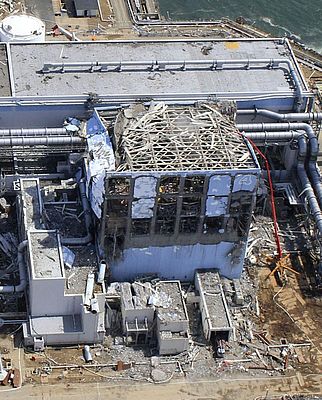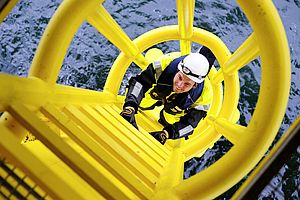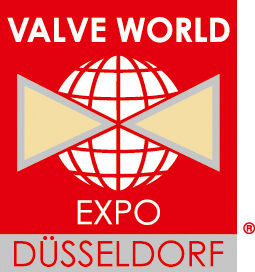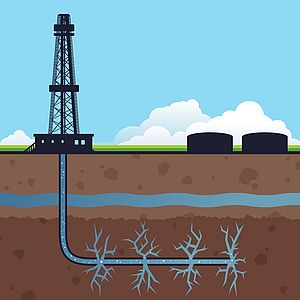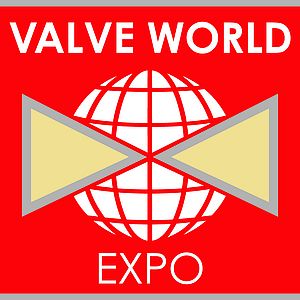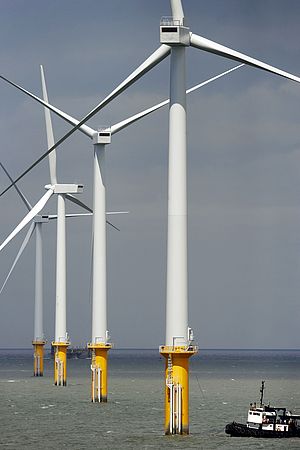The nuclear energy market stays important for valve makers, yet quality demands will continue to rise.
On 11 March 2011, the world held its breath. An earthquake measuring 9.0 on the Richter scale triggering a 23 meter high tsunami devastated towns and villages along a 240km coastal strip of northeast Japan. The world mourned the victims. And the world is also set for change – the disaster in the Fukushima nuclear power plant has put the renaissance of nuclear energy in the last few years into question again. Even though the world will not turn its back on nuclear energy, it can be expected that the valve industry will have to come to grips with rising security and quality demands. Furthermore, increasing demand for components for renewables will also have a positive impact on orders.
Valve industry shows its solidarity
Nearly 25,000 lives were claimed by the catastrophe, around half a million Japanese lost their homes and took refuge in emergency shelters. Japan’s government estimates the damages amount to 310 billion US dollars. The entire valve industry naturally also feels concerned. “This is a huge catastrophe for Japan,” states EBRO Sales Manger Dirk Meierlücke. The German valve and pumps manufacturer initiated a donation campaign as a sign of solidarity with Japan and the deep bond it feels in connection to the island state. “The people in Japan need our support,” a company representative from the Frankenthal-based company explained.
This deep bond results from a long-standing relationship. KSB founded a sales company in Japan in 1990, with a staff of six people working in Tokyo and ten in southeast Osaka. The company mainly manufactures products for Japan’s industrial and maritime sector. Luckily, the company‘s Japanese staff survived the catastrophe without any loss. The same is the case for the employees of Japanse valve manufacturer Kitz working in Nagasaka and Ina.
Steel market hardly hit
Swagelok, a US maker of fluid system products, also showed its shock. “We stand prepared to offer all the support we can to our customers in Japan,” said president and CEO Arthur F. Anton. The company was thankful that none of its 350 Japanese employees were missing or seriously hurt, issuing the statement “most sites didn’t suffer any larger damages.” Demand for Swagelok’s products and solutions is very likely to rise when repairs begin on Japan’s infrastructure. “The delivery of components, parts and services our customers need have our highest priority,” said the CEO. Solidarity is being shown worldwide by the valve and fittings community.
Yet the Japanese economy is taking a hit, despite the fact that not all plants were impacted by the earthquake’s devastating effects. Both the costs for reconstruction and the energy squeeze are a strain on the struggling economy. Delivery problems in Japan’s export sector are another factor which is being felt by neighboring states in Southeast Asia.
On a global scale, the dip in Japan’s economy has a marginal effect. This is also the case for the steel market, on which valve makers are highly dependent. “At the moment, we see a shortfall of around 11.5 million tons of steel from Japan,” says Benedikt Niemeyer, CEO of German company Schmolz + Bickenbach. With a worldwide production volume of 1.2 billion tons he says “this deficit can be economically neglected.” The company doesn’t expect any dramatic price effects on resources.
Security demands rise even higher
The Fukushima nuclear catastrophe will nonetheless have repercurssions worldwide, especially for the energy sector. Schmolz + Bickenbach sees higher demand for special steels in the sector. “Stricter international security requirements for nuclear power plants are being prognosed,” explains Niemeyer. Forged steels are being used for retrofitting and for new plants, instead of less resilient cast steel. Governments are currently checking how safe and future-proof the entire energy sector is. This will have consequences for the valve, drive and sealings industries, as various makers supply nuclear plants with safety, shut-off and control valves.
Valves are important components in a nuclear reactor and play a major role in keeping it safe, as the nuclear catastrophe in Fukushima made evident. A valve system was developed for the plant, which allowed radioactive steam to be emitted. However, the valve system in the Japanese reactor failed when exploding hydrogen destroyed three walls.
Valves designed wrongly
One of the soft spots of Fukushima 1 was the emergency cooling system, as Masahi Goto, an engineer who aided in designing the security containment, explained. The emergency cooling system wasn’t conceptualized as a safety system. Valves and pipes were not designed to handle the high pressure resulting from an accident, said Goto. Radioactivity was emitted right at the beginning of the accident because of this. This would be a planning mistake, should a review corroborate Goto’s allegations. Security demands would certainly increase for valves designed to handle such catastrophes.
In the past, security aspects naturally were a major concern. “The nuclear energy market is one of the most strictly regulated industries,” explains US valve manufacturer Swagelok. Suppliers continously have to interpret diverse norms, customer requirements and regional rules. Some companies joke that there are five kilograms of documentation per kilo of valve and fittings….
It can be presumed that the folder containing norms, rules and certificates will grow even thicker in the future. Only the best manufacturers oft the highest quality valves and fittings will continue to succeed in this area of business.
On the test stand, yet not in question
Not only are products for nuclear reactors being put on the test stand, but the entire industry as such has to put up with its security and sustainability being put in question. This isn’t the case just because some power plants closely resemble the damaged one in Japan. Are humans able to control nuclear power plants, in sight of natural disasters and terrorist attacks? Governments worldwide are giving different answers to these questions. The future of nuclear energy depends on these. These developments are being monitored carefully by the valves and fittings industry, as product portfolios have to be made to match the future energy mix.
“Check safety, yet do not exit nuclear technology” sums up the approach of most European states. The EU is enforcing stress tests for all plants.
Finland, for instance, is reviewing its contingency plans for nuclear power plants. Russia is also set to draw conclusions from the events in Japan, declared Vladimir Putin. The country nonetheless is adhering to atomic energy and will continue to build plants and export its technology. France, which has the highest amount of reactors in Europe, Poland and the Czech Republic have also said “yes“ to keeping nuclear power.
Germany stays skeptical
In Germany, skepticism in regards to nuclear energy is on the rise. Older plants have already been shut down and the extension of permits agreed upon two years ago is being put in question. Large energy companies such as RWE and Evonik are exposed to the threat of losing big shares in their home market.
Switzerland has refrained from allowing new nuclear power plants. The country’s nuclear supervisory board is supposed to create new or sharper safety standards, according to Swiss Minister for the Envorinment Doris Leuthard. Austria decided to say no to nuclear energy years ago.
However, the entire world is not in the process of turning its back on nuclear energy. In the USA, where no new plant has been built in the last 20 years, voices are being heard demanding to put all of the 100+ plants under review. Yet no demands are being made to turn them off. Emerging countries such as China and India are relying heavily on nuclear technology. China has 13 nuclear power plants in operation, with a combined capacity of 10.8 Gigawatts. Plans are to increase by eight times the total capacity by 2020. All in all, the renaissance that atomic power has been experiencing in the last few years hasn’t ended with the disaster in Fukushima, yet it has lost some traction.
In sum, more than 440 nuclear plants are on-line, covering 14% of global electricity consumption. This market will stay significant for valve manufacturers.
Valve makers positioned internationally
Valve makers can take a deep breath – there will be no large drop in demand and it can be expected that the pro-nuclear course will not be changed. Even German valve makers, who have been selling replacement parts and services due to the construction in their home market, aren’t losing any sleep over what politicians have been saying after the Japanese catastrophe, thanks to their position in the global market. Siempelkamp from the town of Krefeld for instance delivers safety valves to nuclear plants worldwide. The same is true for KSB.
In the last couple years, the boom of nuclear power has been based on growing energy consumption, the efficiency of reactors and environmental concerns in regards, among others, to CO2 emissions. The current skepticism in the German-language region has been a boon for other forms of energy, such as coal. This is the suspicion of Mike Blasberg, divisional director of international armatures at Klaus Union. He says, “More coal-fired power plants are being supported.” That is why efforts are being made to lower emissions. Engineers are currently creating ways to store emissions in the earth’s stratum, tells Blasberg.
The Netherlands are also starting to increase dependency on coal-fired energy. An official energy report already urged the country to add new capacities several years ago in order to avoid any bottlenecks. Two new coal-fired power plants are currently being built close to Rotterdam. German company VAG-Armaturen has supplied both projects with shut-off valves.
Industry is looking at renewables
Renewables such as wind, sun, water, biomass and geothermal heat are becoming increasingly important. Yet for the time being, improvements have to be made in regards to their efficiency, capacities and usage rates. This development is an opportunity for industry. Klaus Union has established direct contact to engineers from the solar energy sector. This sector, too, has very high requirements for components. The heat transfer oil, for instance, is highly viscous, explains Mike Blasberg of Klaus Union. “Fittings need to be highly sealed off on the outside,” he says.
OHL Gutermuth, for example, is highly successful in the solar market. In the last five years, the German company has shipped control, shut-off and main valves for heat transfer oil to seven Spanish projects. The projects Andasol 1, 2, 3; Extresol 1, 2 as well as Manchasol 1, 2 had an individual volume of between half a million and two million euro. Desertec could become a huge windfall for valve makers. The project aims to cover 15 percent of Europe’s electricity consumption by 2050 through solar power plants operated in North Africa and the Middle East. “We are looking forward to it getting started,” declared Wolfgang Roehrig, CEO of OHL Gutermuth. If such major projects prove successful, then renewables will put nuclear energy into question. Only then will it possibly come to a turn in energy policy.


